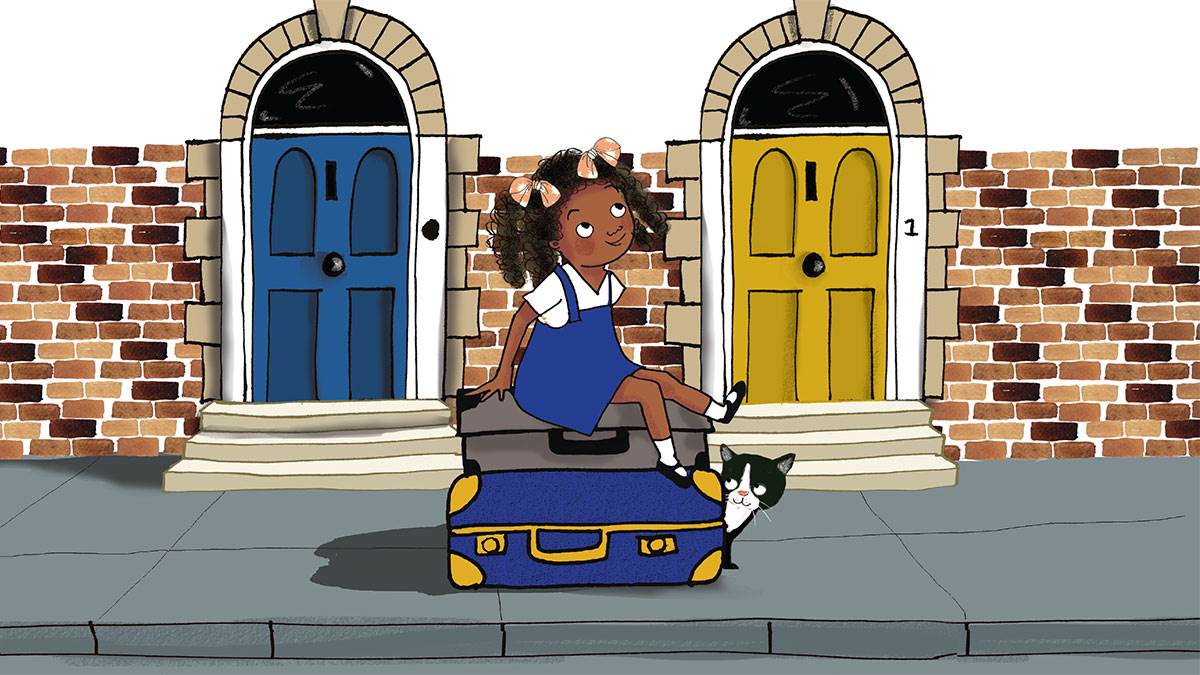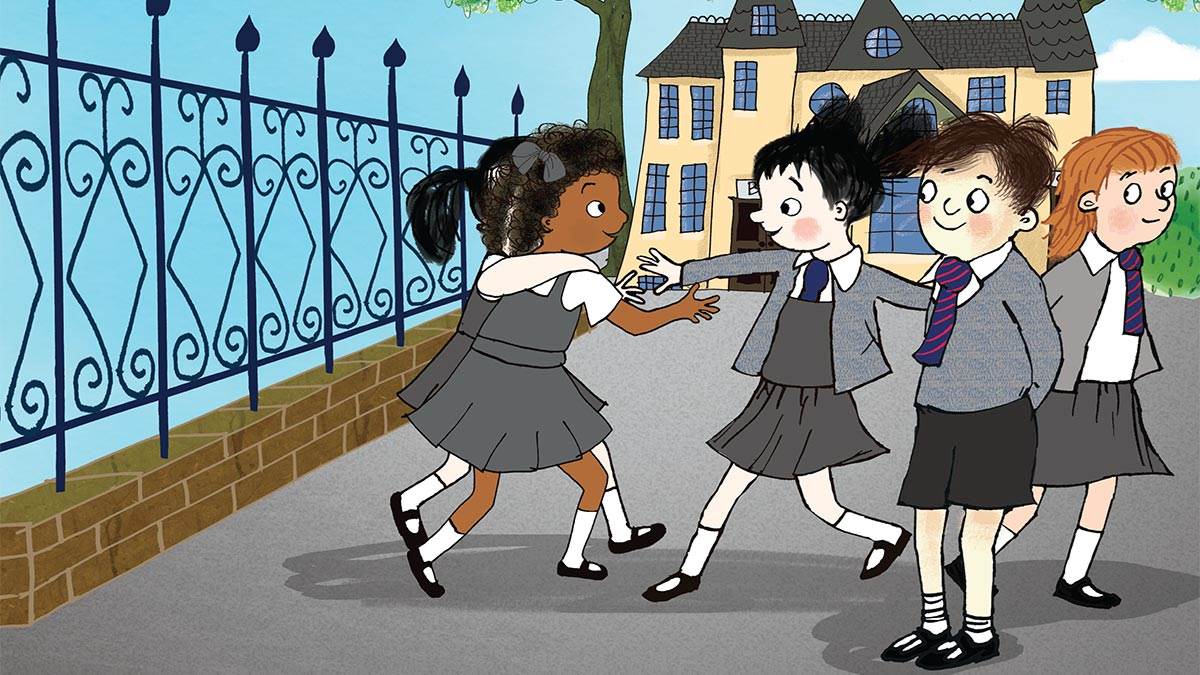Floella Benjamin on turning Coming to England into a picture book
Published on: 08 October 2020 Author: Emily Drabble
Floella Benjamin has rewritten her groundbreaking autobiography Coming to England, turning it into a picture book with beautiful illustrations by Diane Ewen.
We spoke to her about how she did it and why it's so important to get stories for children right...

Why did you decide to turn Coming to England into a picture book?
Coming to England is such a popular book that it seemed a great idea to make a picture book version so younger children can enjoy it too. People might think it's easy writing a picture book, but it's not, especially when you've got quite a complicated real life story such as Coming to England.
You have to dissect it right the way down in a language which doesn't frighten or scare the children, and so they can understand the story. There are only two lines a page, so it's quite a challenge! My voyage from Trinidad happened 60 years ago but I remember every detail of it as if it was yesterday.
Is this picture book version the kind of book you dreamt about reading when you were on Play School?
Oh yes, it's a book I would have loved to have read. But there was no other book like Coming to England around at that time.

Illustration: Diane Ewen
How closely did you work with illustrator Diane Ewen to make the book look just right?
I was very much involved in finding Diane. My publishers Macmillan Children's Books showed me work from at least a dozen illustrators. We wanted a very specific look for the book, something that is really warm and engaging and captured my story exactly right.
In an ordinary story that you're making up, of course the illustrator has more of a free rein to imagine what the author is saying, but because this is quite specific as it's the story of my own life, it has to be accurate and correct. I think anyone who has read Coming to England gets the picture and gets the idea about what I'm talking about, but anyone who hasn't lived through the specific experience at the particular time needs some help on details, for example the kind of hats and suitcases people had at that time, or the setting of Southampton Docks in the 1950s.
It was a great collaboration and I'd love to write another book with Diane! When I look at illustrations I've got to get a warm feeling, and that's what Diane's do.

Some of Coming to England is really upsetting, particularly the racism you experienced. How did you decide what to leave out in the picture book, and what to keep in to tell the same, but slightly different, story?
You look at it holistically. I had to think very carefully about what I wanted very young children to know and grasp. Some of them know about moving to a new place, so they can understand the concept of moving. Some of them know about parents leaving, even if it's for a couple of weeks, so they know the emotional feeling that gives you.
They've all seen the Queen, and we had to find an element of how the story can come good, to give people hope. So it was lovely to have the story of me dreaming about meeting the Queen as a young girl, and then eventually meeting her at the end with my Mum and Dad looking on so proudly. I had to go through bad times, but I feel my life is a happy ending so I needed to give the book a happy ending. Those were the stepping stones I used to get through the book, and leave everything else aside.
In a way, it was the same when I was writing my novel Coming to England for older children, which doesn't have even one racist word in the book. But if I was writing it for adults, then I'd use stronger words to give the real feeling of what it was like. You can't even tell 10 or 11 year olds what it was truly like. I wouldn't want to burden them with it.
When you tell children certain words it stays with them forever, so I don't want to damage children's minds - that will have a psychological effect. In fact, I'm starting to write my adult book, and in it I will tell them the full, shocking, hard-hitting story of what really happened and what it was really like.

Illustration: Diane Ewen
How important was it to have an illustrator of colour illustrate your book?
It was important to have someone who has gone through some aspect of what I was writing. When you have that personal experience, it's great to get an opportunity to share it with society through a book and make a difference.
I think Diane felt it was like giving a gift back to her Jamaican heritage. I dare say someone who didn't feel that personal link to the story may have done a fantastic job, but I just wanted to give an extra level and Diane gave just that. I also wanted to give an opportunity to a new illustrator, especially as there are so few black illustrators working in the UK today. Hopefully that's changing now.
When you first wrote Coming to England did you think of writing a picture book, as this was the age of children to whom you devoted the early part of your career?
No, it was always an autobiographical story. In fact, when I wrote it at first it was twice as long and had to be edited to be so much shorter. So I didn't conceive it as a picture book until now.
Are you feeling more positive about representation in books now, after so many years of not seeing what you first articulated as a problem back in the 1980s?
It's a lot, a real lot, better. We're not quite there yet, but have made significant progress compared to when I said to my Play School producers in the early 1980s, 'Why can't we have illustrations with Black, Asian and Chinese characters on the screen?' Then we realised there weren't any books available that showed these images. Well, I'm pleased to say from that day it has changed so much.
Back in the 1980s, Shirley Hughes was one of the first illustrators to write to me and say, 'I'm really sorry Floella, I hadn't noticed this before'. From then on, she always had a diverse range of characters in her books. That was so lovely to see.

Illustration: Diane Ewen
Children should be of all cultures in stories because that's the society we live in, and this is especially true of picture books. With non-illustrated books for older children you can imagine what you like. But in a picture book you must spell it out.
So a black child should see themselves in a book in a positive way: as an angel, as a superhero, as the boss. And it also means white people can accept black people doing inspirational things like that because they've grown up seeing it. Picture books are very, very important. It's about being inclusive. I also feel passionately about being inclusive regarding disability.
Why is it so important for stories to be told in picture books?
Don't forget, childhood lasts a lifetime. Each child is born with one hundred billion brain cells and they are starting to be connected when the child is 18 months. Picture books formulate their ideas and those connections with what they are seeing and hearing - and that affects the make-up of who they will be as adults.
I do a lot of prison visits and when I talk to prisoners they often say, 'When I was a child this happened to me.' I've realised children's minds get affected at a very young age with happy things, sad things, traumatic and joyful things. So the picture books that young children are seeing are vital.
I love the way BookTrust gives books to all children and parents. That is so important. Before a child can read the words, a picture is telling the story and connections are being made - for life. Children are connecting all the time and they are seeing things for the first time, and that's why it's such a responsibility to get things right.
It's got to be inspirational, beautiful and perfect. If you tell a story, it's got to be the best. Because remember, whatever they get first will stay with them forever.
Coming to England – An Inspiring True Story Celebrating the Windrush Generation by Floella Benjamin and illustrated by Diane Ewen is published by Macmillan Children's Books on 8 October.






Add a comment